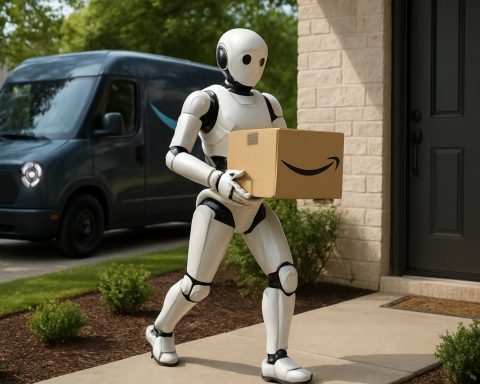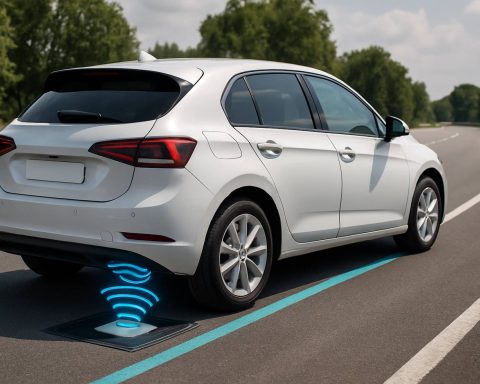Could Amazon’s Robot-Powered Delivery Vans Change the Way You Get Packages Forever?
Amazon launches humanoid robots to deliver packages from Rivian electric vans, aiming for speed and sustainability in last-mile logistics.
- 20,000+ Amazon Rivian delivery vans in operation
- 100,000 electric vans planned for future fleet
- 2040 target for Amazon’s net-zero carbon footprint
- First U.S. humanoid robot delivery trial kickstarted in June 2025
Imagine opening your front door and being greeted by a humanoid robot, fresh off an Amazon-branded electric van. That future is closer than ever. In June 2025, Amazon began live-testing humanoid robots for home package delivery—directly from the rear of its rapidly expanding Rivian electric vehicle (EV) fleet.
The experiment isn’t science fiction. It’s taking place in a high-tech San Francisco “humanoid park,” an indoor obstacle course where robots navigate curbside chaos, climb stairs, and sidestep puddles—all in preparation for the real world.
How Do the Robots and Rivian Vans Work Together?
Amazon’s new robots, including sleek models from China’s Unitree, ride shotgun in Rivian vans custom-built for efficiency and sustainability. These vans, already famous for their safety and technology, now act as mobile launchpads for robotics.
Deep inside Amazon’s software labs, engineers leveraged artificial intelligence models—such as DeepSeek-VL2 and Alibaba’s Qwen—to help the robots “see” and navigate both digital and physical landscapes. The robots exit the van, cross unpredictable sidewalks, and deliver packages right to your door, all without a human driver stepping out.
Q: Why Did Amazon Start This Humanoid Delivery Pilot Now?
Amazon’s headlong push into robotics comes as the company looks to slash delivery times and cut emissions—key components of its pledge to achieve net-zero carbon emissions by 2040. With over 20,000 Rivian vans already active and plans for 80,000 more, the scale is massive.
Testing started in a controlled facility where dozens of robots faced simulated city streets, driveways, and doorsteps. Next up: real-life “field trips” to neighborhoods around San Francisco, where unpredictable weather, pets, and the human element bring fresh challenges.
For more on Amazon’s sustainability aims, visit Amazon.
What Makes This Different From Past Amazon Robots?
Warehouse robots are old news for Amazon; the e-commerce giant has deployed thousands of them to streamline packing and sorting. But package deliveries, with their endless variables—crowded sidewalks, barking dogs, uneven pavement—are a far greater leap.
The robots for this pilot aren’t just carts on wheels. They’re agile, human-sized machines designed to walk up steps, ring doorbells, and drop deliveries safely at your doorstep. If successful, the program could convince consumers and regulators that bots belong on your block.
For more on auto tech innovation, see Volvo.
Q: What Could This Mean for the Future of Deliveries?
If Amazon’s trial pays off, the impact on logistics could be seismic. Merging Rivian’s zero-emission vans with advanced humanoid robots could disrupt how companies everywhere think about last-mile delivery.
Competitors like FedEx and UPS may have to fast-track their own tech. And for consumers, it could mean even faster, greener deliveries—and fewer missed packages.
For EV news, check Rivian. For AI tech updates, visit Alibaba.
How Could You Spot a Humanoid Delivery Robot?
Wondering if you’ll see one on your street? Amazon’s test units tend to be about the size of an average adult, painted in sleek metallics, and equipped with lights and sensors. If you see a robot stepping out of a Rivian van and heading your way, you’re witnessing the future being built in real time.
Don’t miss out—get ready for robot deliveries!
- Keep an eye out for Amazon’s humanoid robots in San Francisco and other trial cities
- Track Amazon’s green delivery goals and technology advances
- Prepare for lightning-fast, eco-friendly package drops at your door














